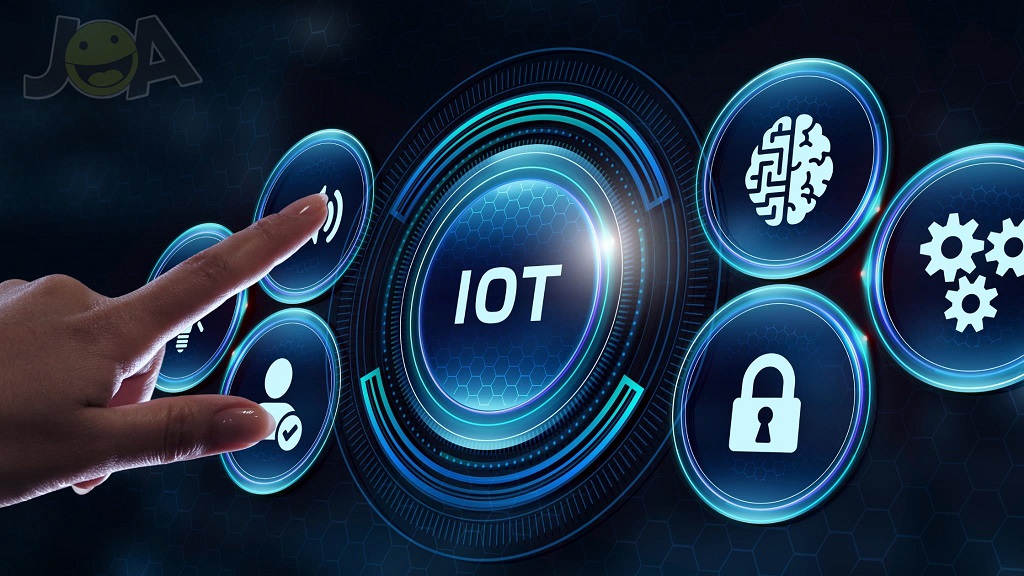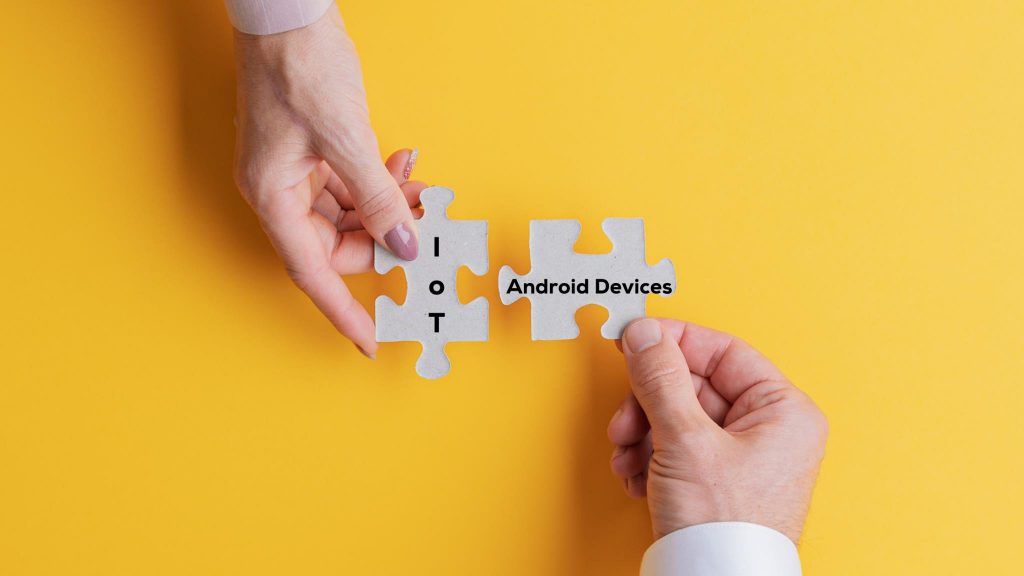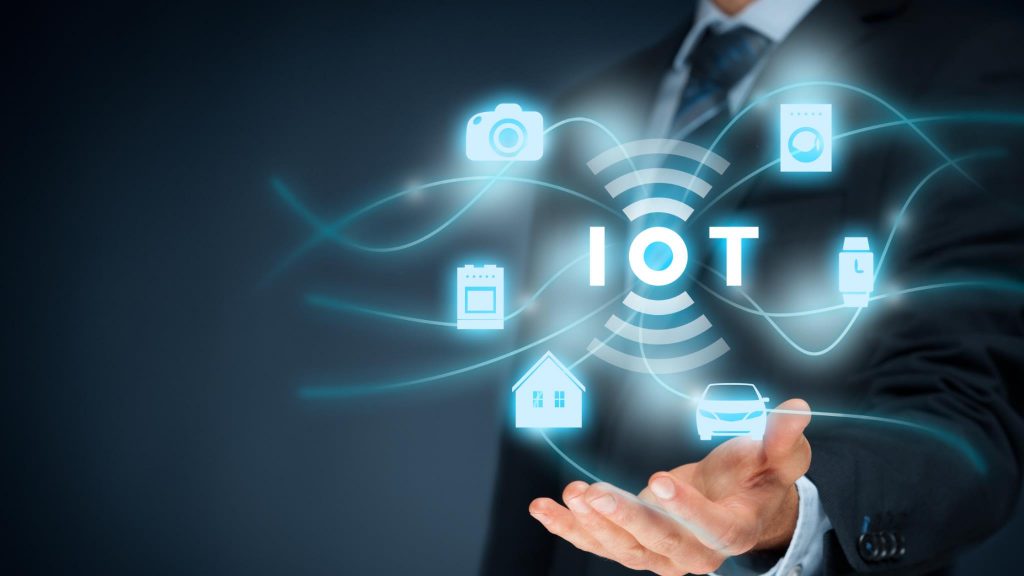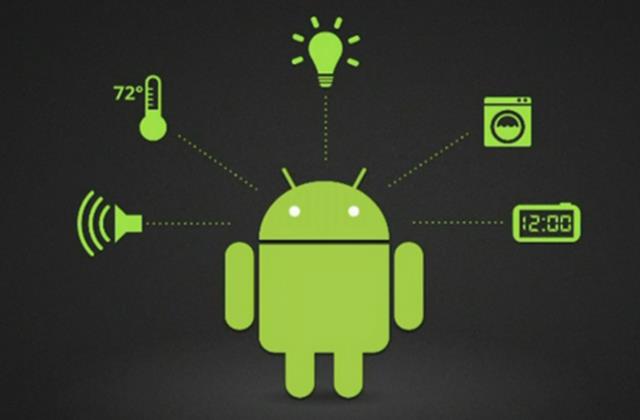Last Updated on November 12, 2022

IoT is becoming increasingly popular in the world today. There has been a need to ensure the interconnectedness of devices to increase business efficiency. However, many businesses find it difficult to manage IoT devices and ensure they get the best out of them.
One of the most efficient ways to manage these devices is using Android phones. Managing IoT devices using hand-held devices is easier than using any other method. But you need to know how to connect IoT devices using an Android phone.
How do IoT Devices Communicate?
Wireless IoT devices haven’t always had internet connectivity. Businesses using them have had to make aftermarket modifications to accommodate wireless connectivity. But the need to cut costs and improve functionality makes IoT device manufacturers design new, easily linkable devices.
The use of Android devices to ensure wireless connectivity has been lifesaving. However, you need to update your knowledge on Android devices before using them to connect to IoT devices. It will help first to know how Android works and then apply that knowledge in the IoT world.
Otherwise, you might end up missing out on important industry updates. There are various resources you should consider for learning. You can start building your knowledge by researching from the many great resources available on the internet. Getting the insights from these resources will make it easy to connect IoT devices. You can easily start using IoT devices to get the desired results from these devices. This ensures efficient communication and data transfer from one IoT device to another.
Why do Android Devices and the Internet of Things Partner Well?

There are various reasons why IoT and Android devices are partnering well. Knowing how these two are interconnected and how you can use them will be critical. This section takes a more in-depth look at this interconnectivity to help understand IoT devices and Android.
The primary forces behind IoT are Android apps. There are billions of smart gadgets that are compatible with Android. Additionally, since Android is currently the most popular mobile operating system in the world, everybody familiar with smartphones is also aware of its presence.
IoT is essentially developed and managed on Android. Because Android is open source, virtually anyone can modify it and utilize its source code in virtually any tool or gadget. Additionally, the Android Things preview version gives app developers access to the new OpenGL and WebView provisions. IoT devices generate a significant quantity of data that can be viewed and accessed from anywhere in the world. This data may be transformed to produce practical insights, predict solutions, anticipate events, establish patterns, and instruct everyday objects to optimize themselves.
1. Android is a Universal Front End – Helpful to Developers
This is one reason why Android phones work perfectly with IoT devices. The brains behind Android, Google, have allowed device makers and software developers to leverage the Android platform. Moreover, the number of devices that run on the Android OS has increased significantly.
IoT devices are among the devices being built on the Android OS. The Android environment acts as the front end for IoT devices. One reason IoT developers prefer Android is that it is inexpensive. This lowers the overall cost of IoT devices, making them affordable for consumers.
2. Apps drive IoT

A gadget is a gadget unless you do something to make it deliver better value. One way to ensure gadgets or devices deliver the desired results is by using an app or software to manage them. Finding the right software is one of the most important steps to ensure success.
You cannot make the most of IoT devices without apps. This is one reason Android has become critical in the IoT world. It is no coincidence that Android drives the IoT industry. The good news is that the IoT movement will keep moving as long as developers keep leveraging apps.
3. IoT is being Built on Java
Another reason Android is driving the IoT industry is due to the fact that IoT is being built on Java. Android makes it easy to make the most of Java. Using embedded Java requires one to have dedicated devices. Various elements make up the Android IoT ecosystem.
One of the important facets is the sensor, which detects temperature and generates digital signals. There is also data transfer, which helps transfer data from the sensor. Lastly is the device that supports the IoT ecosystem components and program that receives and stores data.
Now you know why IoT and Android pair perfectly. The development of smartphones was just the beginning. Their applications in the IoT industry have made Android even more important in the tech world. You should consider investing in smartphones if you are deploying IoT devices.
Connecting to Smart Devices with Android
Knowing how to connect smart devices to Android can be an excellent idea. It allows you to manage these devices even if they are far away. This reduces the need to check out one device after another, thus saving you precious time.
There are various steps that you should keep in mind when doing this. The first step should be to prepare the materials you need for the task. You need to get the hardware connection right and prepare the development environment before running the software.
You already know that connecting to smart devices isn’t as daunting as you thought. All you need is an Android smartphone and the insight to help you use it to link IoT devices. Connecting wireless devices and ensuring efficient communication between them has never been easier.

Android Things
Android Things is the new IoT device-focused solution from Google, which incorporates some of the most important brillio technologies. Along with the standard Android API and the library to access various Google services, this embedded operating system also includes a brand-new library called the Things Support Library.

It comes with two main features:
- A User Driver API – enables the addition of new device drivers to an application. This is helpful for injecting hardware events into the system and making them available to applications.
- Peripheral I/O APIs – enable access to sensors and actuators through a variety of protocols and interfaces (GPIO, PWM, I2C, SPI, UART), are also available.
An Easy Method to Connect IoT Devices using an Android Phone
Step 1: Take your smartphone and open Google Play Store.
Step 2: From the Google Play Store, find the “Cumulocity IoT Sensor App” and download it.
Step 3: After you install the app, you are asked to log in into the app.
Step 4: After logging in, you will see a QR code pop up in the window.
Step 5: You have to scan the QR code on your Android phone.
Step 6: To register your Android phone in that Cumulocity IoT Sensor App, you will need to click the next step and this pops up another QR code.
Step 7: Open the downloaded Cumulocity app in your android phone and scan the QR code.
That’s it. You are all set and ready to connect IoT devices using an Android phone. To get started with IoT, no hardware purchase is necessary. Simply implement your own IoT solution with your (old) smartphone and this innovative IoT concept. The Cumulocity IoT platform in the cloud is appropriate for both novices and experts.
Frequently Asked Questions
Is IoT on Android possible? It is hardly shocking that Android is the IoT movement’s main driver. Java is the programming language of choice for many Internet of Things devices. It follows that Android’s dominance of the IOT market is logical. In contrast to the usage of embedded Java, which necessitates the use of specific devices, Android enables the application of Java in a form that makes sense.
How do IoT devices communicate with one another? By connecting to an IoT gateway or other edge device, which either sends data to the cloud for analysis or analyzes it locally. These gadgets converse with other similar devices on occasion, acting on the data they exchange.
Is my mobile phone an IoT device? As a result, the user’s primary IoT and Internet of Everything (IoE) interaction and control device might be thought of as the smartphone. The key components of the IoE concept are big data, mobility, and cloud services. The IoE movement is progressing due to the widespread use of smartphones.
Wrapping Up
This isn’t everything about the connectivity of IoT devices and Android phones. However, you now have some ideas about the way you can connect IoT devices using your Android phone to simplify how you manage these devices.
Many people do not deploy IoT devices because they think managing them can be daunting. However, it is not a daunting task to use an Android phone. This should give you the confidence to invest in IoT devices.

[…] device management refers to a set of practices involving accessing, controlling, and monitoring IoT devices, mobile devices and tablets in an organization from one centralized platform. A RDM software […]
[…] the IoT-connected devices are set to run into billions of numbers, the need to remotely control and manage these devices will […]
[…] reports that there are currently 15.14 billion IoT-connected devices worldwide. While some manufacturers work hard to constantly improve how the Internet of things […]